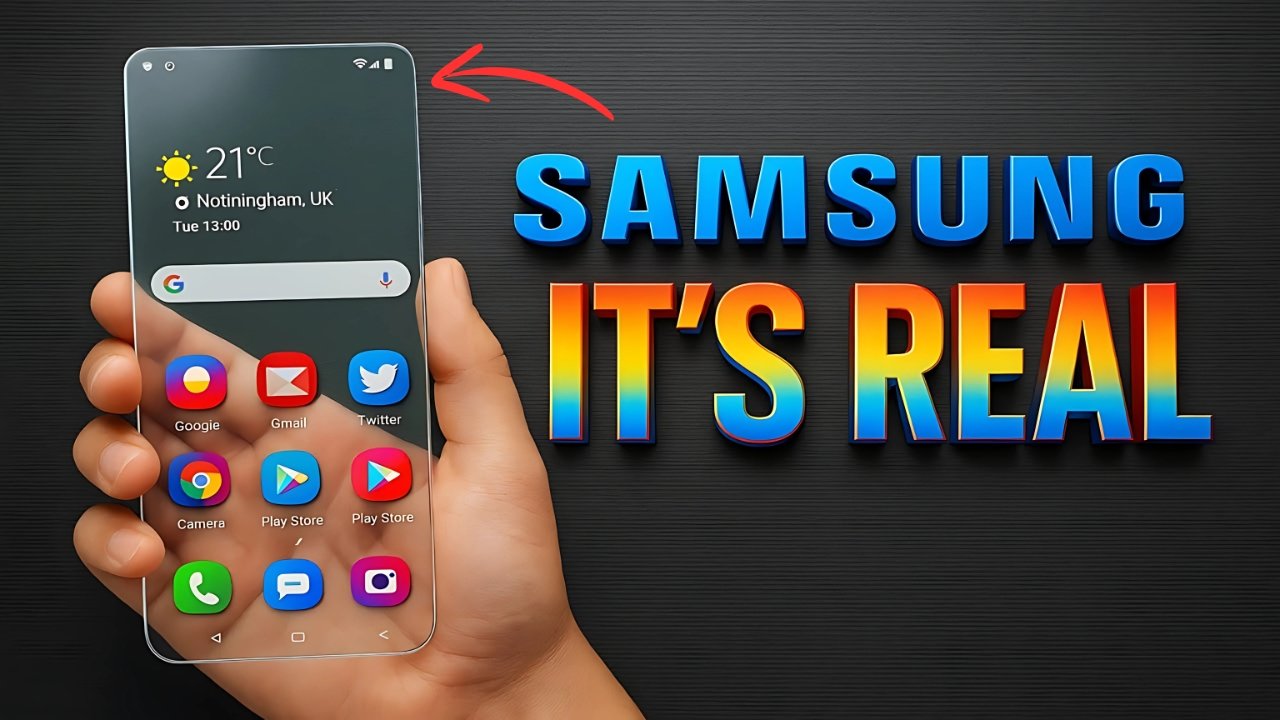Samsung Transparent Smartphone: The concept of transparent technology has captivated imaginations for decades, appearing in countless science fiction films and futuristic visions. Samsung’s recent breakthrough in transparent display technology brings us closer to making these fantasies tangible reality. While still in developmental stages, their transparent smartphone prototype represents a revolutionary leap that could fundamentally transform how we interact with mobile devices and the world around us.
The Technology Behind the Magic
Creating a truly transparent smartphone requires overcoming numerous technical challenges that have stumped engineers for years. Samsung’s approach utilizes advanced OLED technology combined with transparent conductive materials that allow light to pass through while maintaining electrical functionality. The display achieves transparency through microscopic gaps between pixels that remain invisible to the naked eye while preserving image quality and color accuracy.
The most impressive aspect involves the integration of transparent semiconductors and circuitry. Traditional smartphone components like processors, memory, and sensors typically require opaque materials that would compromise transparency. Samsung’s engineers have developed innovative solutions using graphene-based conductors and transparent silicon alternatives that maintain functionality while allowing light transmission.
Battery technology presents perhaps the greatest challenge. Current lithium-ion batteries rely on opaque materials that cannot easily be made transparent. Samsung’s prototype reportedly uses a revolutionary transparent battery design that distributes power storage across the device’s surface area rather than concentrating it in a single location. This approach not only maintains transparency but also potentially improves safety by reducing heat concentration.
Practical Applications Beyond Novelty
While the visual appeal of a transparent phone is undeniable, the practical applications extend far beyond mere aesthetics. Augmented reality experiences become dramatically more immersive when digital information seamlessly overlays the real world without the barrier of an opaque screen. Users could hold up their device to view buildings, landmarks, or products while receiving real-time information that appears to float naturally in space.
Photography and videography gain entirely new dimensions with transparent devices. Imagine capturing images where the photographer can see both the subject and the camera interface simultaneously, eliminating the disconnect between viewfinder and reality. Video calls could transform into truly face-to-face conversations where participants see each other’s actual environments rather than artificial backgrounds.
Navigation applications could revolutionize urban exploration by overlaying directional arrows and information directly onto streets and buildings as viewed through the device. This creates an intuitive wayfinding experience that feels more natural than constantly looking down at a traditional screen.

Design Challenges and User Experience
Transparent smartphones introduce unique user interface challenges that require completely reimagining mobile interaction design. Traditional UI elements like buttons, menus, and icons must be redesigned to remain visible against varying backgrounds while not overwhelming the transparency effect. Samsung’s prototype reportedly uses dynamic opacity adjustments that automatically modify interface visibility based on environmental conditions.
Privacy concerns arise when device screens become see-through. Users need options to instantly switch between transparent and opaque modes depending on the situation and content being viewed. Samsung addresses this with an electrochromic layer that can toggle between transparent and opaque states within milliseconds, providing privacy when needed while maintaining the transparent aesthetic for appropriate moments.
Durability represents another significant consideration. Transparent materials often lack the strength and scratch resistance of traditional smartphone construction materials. Samsung’s engineers have developed a multi-layer transparent coating system that provides protection while maintaining optical clarity. However, repair costs and replacement complexity will likely exceed traditional smartphones significantly.
OnePlus 13 – Full dhakad camera smartphone with amoled display
Samsung Transparent Smartphone Market Reality and Future Prospects
Despite the technological marvel, Samsung’s transparent smartphone faces substantial obstacles before reaching consumer markets. Manufacturing costs currently make the device prohibitively expensive for mainstream adoption. Industry estimates suggest initial pricing could exceed premium flagship devices by several thousand dollars, limiting appeal to technology enthusiasts and luxury consumers.
Ecosystem compatibility presents additional hurdles. Existing applications and interfaces require significant modifications to work effectively with transparent displays. App developers need time and incentives to redesign their products for this new form factor, creating a chicken-and-egg scenario where device adoption depends on software availability and vice versa.
However, Samsung’s commitment to transparent technology extends beyond smartphones. The company envisions transparent displays integrated into windows, car windshields, and architectural elements, creating a comprehensive ecosystem where digital information seamlessly blends with physical environments.
The transparent smartphone represents more than just another gadget; it symbolizes humanity’s persistent drive to merge digital and physical realities. While commercial availability remains years away, Samsung’s prototype demonstrates that transparent mobile devices have moved from science fiction concepts to engineering challenges that can be solved with enough innovation and determination.
